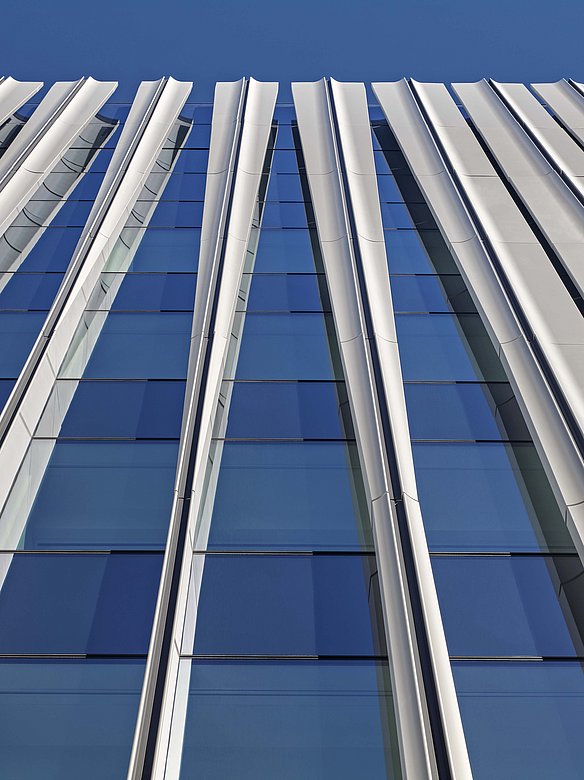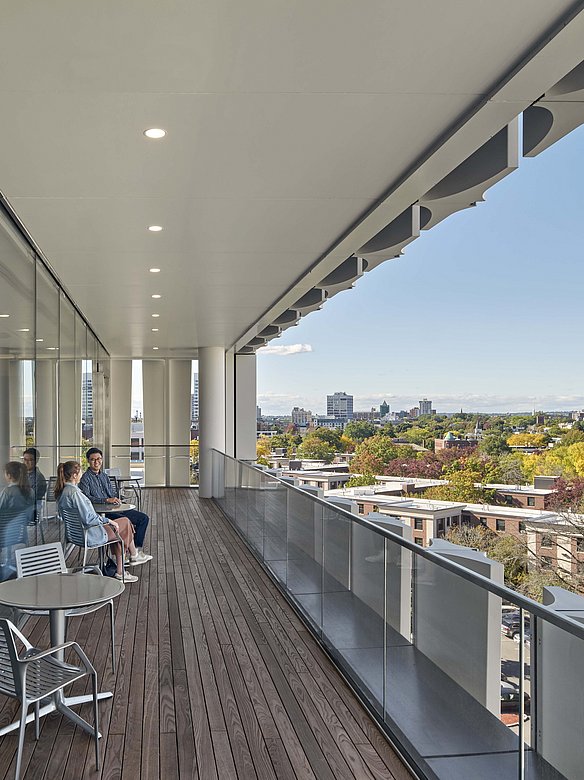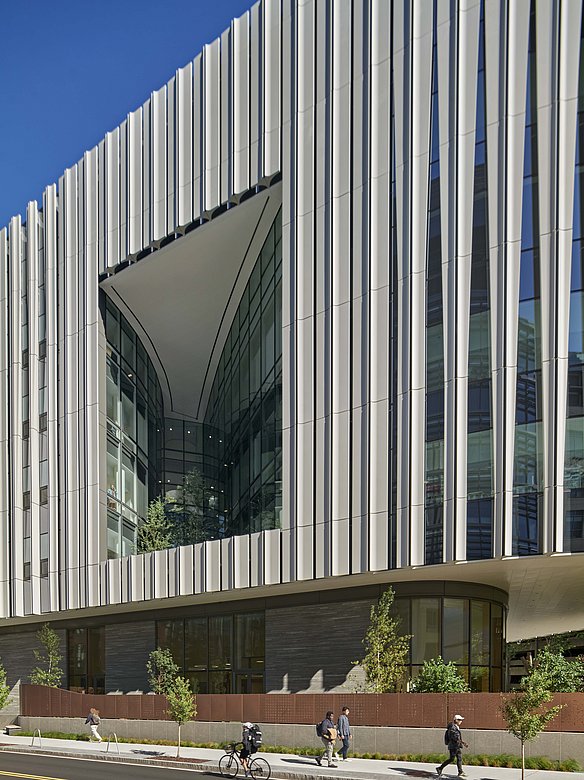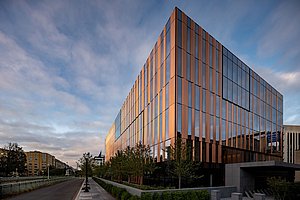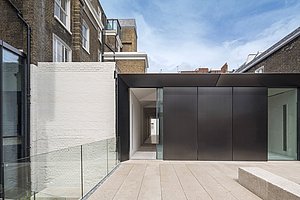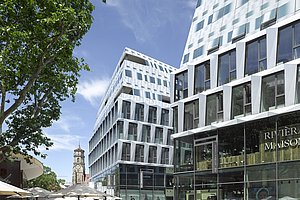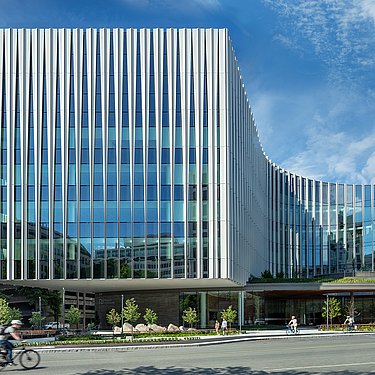
Ragon Institute
Innovative Design and Advanced Research: The New Home of the Ragon Institute
The Ragon Institute in Boston, a unique collaboration between Mass General, MIT, and Harvard, is at the forefront of research into infectious diseases such as HIV-AIDS and COVID-19. The newly constructed building of the institute, designed by PAYETTE, is situated on a 6,280 square meter triangular plot and impresses with its innovative and thoughtful architecture.
Facade design for an inspiring working environment.
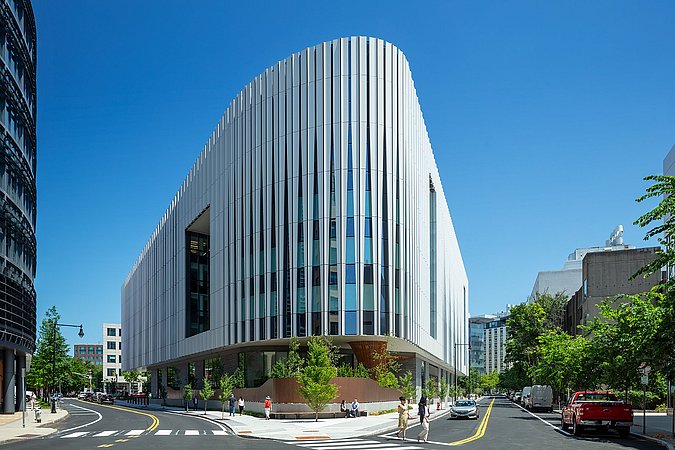
Concept
The new building features five floors of state-of-the-art, specialized laboratory spaces. With an open and centralized layout, the building is designed to foster interdisciplinary research, paving the way for new approaches to the prevention, detection, and cure of infectious diseases. The design also supports the institute’s collaborative culture by creating spaces that facilitate scientific exchange and collaboration. To promote a healthy and productive work environment, the Ragon Institute offers numerous amenities for its employees.
Architecture
The building concept incorporates the unusual shape of the plot and integrates it harmoniously into the architecture. With its organic forms and elegantly curved design, the Ragon Institute stands out from the often angular architecture of the surrounding area. The minimalist facade is characterized by vertically oriented, individually shaped sunshades that taper or open in response to the interior program, creating a dynamic appearance.
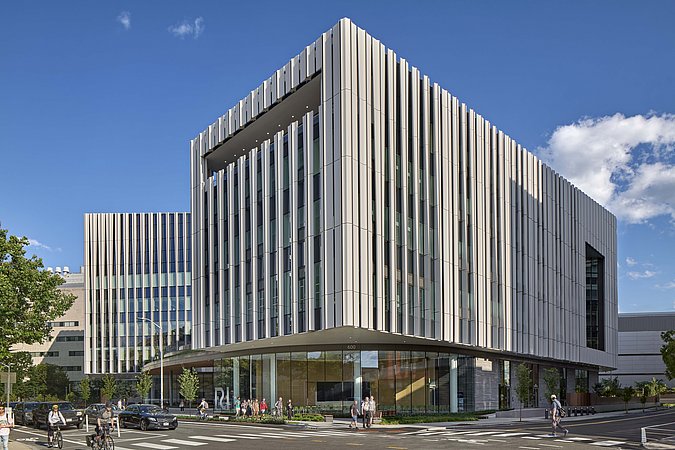
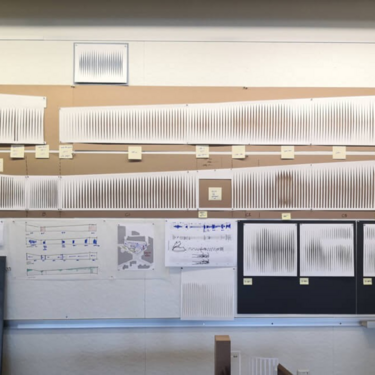
Implementation
During the implementation phase, the design team worked intensively on models and mock-ups for the facade’s sunshade elements. Physical models in various materials and sizes were created to assess design approaches, as well as dimensions and proportions in the context of the overall building. The goal was to find an aesthetic solution that allows sufficient light into the building while also meeting functional requirements.
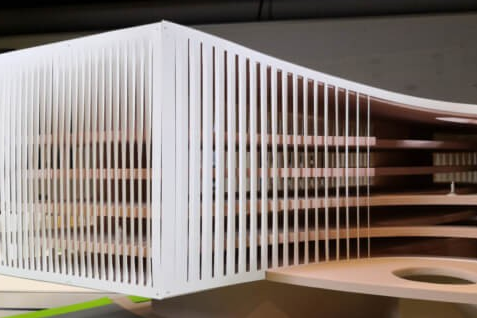
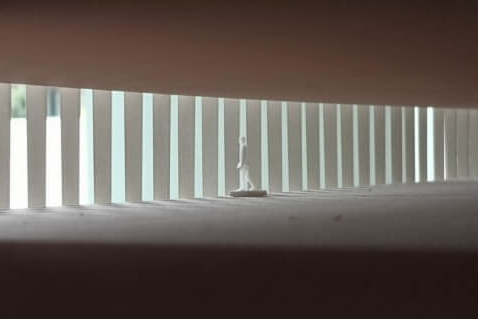
The materiality of the building is inspired by the institutional character and tradition of limestone. However, due to its numerous advantages, the sunshade elements were made from powder-coated aluminum. POHL developed POHL Tile, a special surface that perfectly mimics the appearance of a stone facade while combining all the physical properties of aluminum. This solution is significantly lighter, durable, and more formable than stone, allowing for large-format implementations.
The individual louvers of the facade create a dynamic interplay and gently wrap around the building volume. They touch the glass only minimally, giving the building its unique lightness.
Photos: ©Robert Benson, ©Warren Jagger ©PAYETTE
PAYETTE Fabrication Feature: Cambridge Research Building Sun Shading Models
Contact us
Do you have any questions about our solutions or are you interested in working with us?
